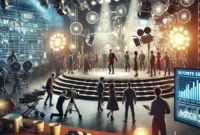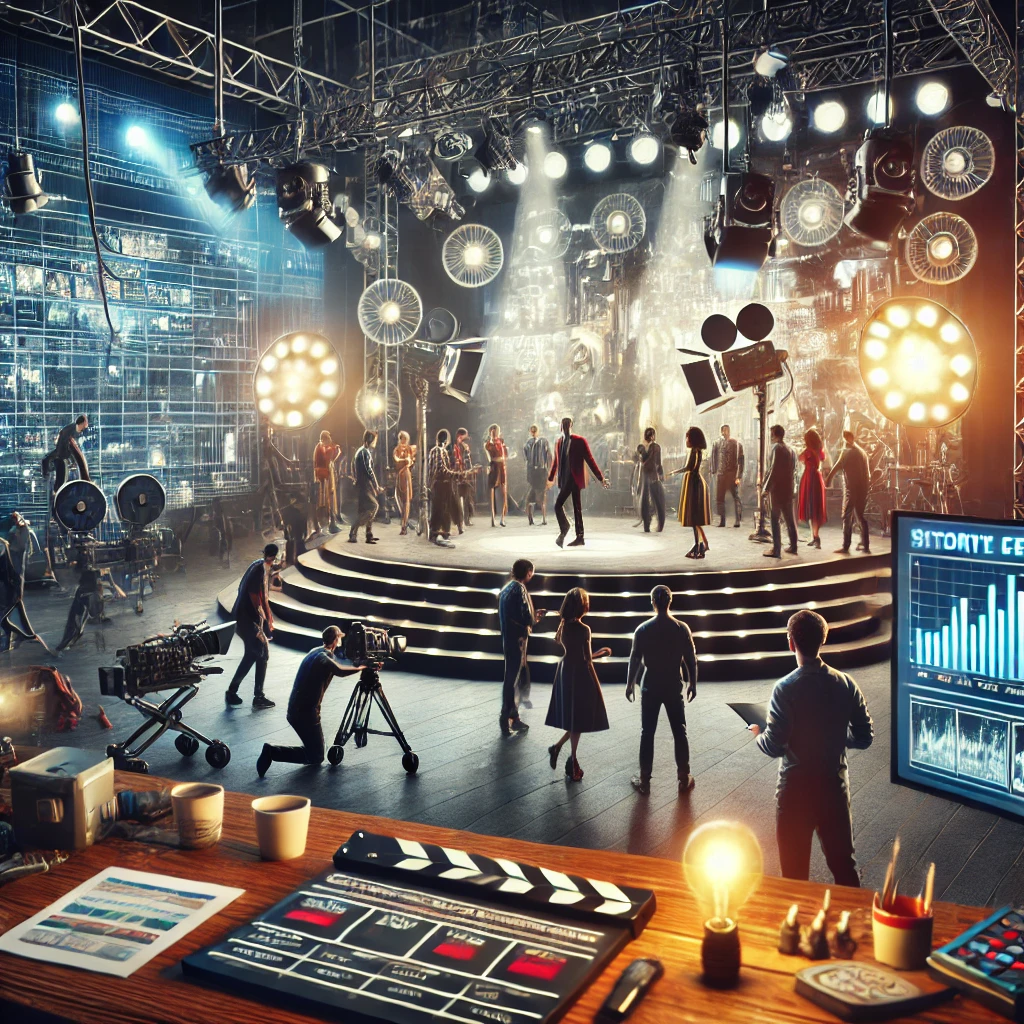From Script to Screen: The Ultimate Guide to Understanding How Movies Are Made
Hey there, movie lovers! Have you ever watched a film and thought, “Wow, how did they make that?” Whether it’s a mind-blowing action sequence or an emotional scene that tugs at your heartstrings, the journey from a simple script to the big screen is nothing short of magical. But trust me, making a movie isn’t as simple as pointing a camera and yelling “Action!” It’s a crazy ride with tons of creative people working together to make that cinematic magic happen.
In this article, I’m going to take you behind the scenes of how movies are made. We’ll break down the entire process—from the moment the script is written until the final cut is projected in theaters. So, grab some popcorn, sit back, and let’s dive into the fascinating world of filmmaking!
1. It All Starts with a Script
Every movie begins with a script. Yep, those lines you see actors reciting started as words on a page. A screenwriter is the mastermind behind the story, characters, and dialogue. Think of the script as a blueprint for the movie. It outlines every scene, what characters say and do, and even describes the setting.
- Idea Generation: Some scripts are born out of original ideas, while others are adapted from books, plays, or even real-life events.
- Writing the Script: This is where the screenwriter writes every little detail, from camera angles (in some cases) to dialogue. A lot of drafts are written before they land on the perfect one.
- Pitching: Once the script is ready, it gets pitched to producers or studios. If they love it, the green light is given to start production.
Fun fact: Some of your favorite movies probably went through dozens of rewrites before being approved!
2. Pre-Production: The Planning Stage
Once a script is approved, the movie enters the pre-production phase, which is all about planning and preparation. Think of it as laying the groundwork for a successful shoot. Here’s what happens during this crucial stage:
- Assembling the Crew: The director is the boss of the creative side, but they can’t make the movie alone. They hire a crew that includes the cinematographer, editor, costume designer, sound designer, and more. Each person is in charge of a specific part of the movie, making sure it runs like a well-oiled machine.
- Casting: This is one of the most exciting parts of pre-production. The casting director works with the director to find the perfect actors for each role. Auditions, callbacks, and negotiations take place before the final cast is locked in.
- Budgeting: Movies aren’t cheap to make, so the producer puts together a budget. This includes everything from paying the actors and crew to location fees, equipment rentals, and marketing.
- Location Scouting: A location manager searches for real-world places to film scenes. This could mean finding the perfect café for a romantic scene or an epic mountain range for that dramatic showdown. If they can’t find the right spot, a set designer might build the location on a soundstage.
- Storyboarding: The director and cinematographer work together to plan how every scene will be shot. Storyboards, which are like comic strips, are created to map out the visual flow of the movie. This helps everyone know what the director wants in terms of camera angles and shots.
3. Lights, Camera, Action: Filming the Movie
Welcome to the set, where the magic really starts happening! Production is when the script finally comes to life, with actors stepping into character, cameras rolling, and all the hard work from pre-production being put into action.
- Directing the Actors: The director guides the actors through every scene, helping them bring their characters to life. Actors often do multiple takes to get the perfect shot.
- Cinematography: The cinematographer, or director of photography, is responsible for capturing the movie’s visuals. They decide on lighting, framing, and camera movement. This is where you’ll see those cool slow-motion shots, epic drone shots, or intimate close-ups.
- Sound and Lighting: Behind the camera, the sound and lighting teams make sure every scene looks and sounds perfect. They control things like the mood of the scene with lighting setups or capture crisp dialogue with boom mics.
- Special Effects (VFX and SFX): If the movie involves any visual effects (think explosions, space battles, or CGI monsters), these are either filmed on set or planned to be added later during post-production. Practical effects like fake blood or animatronics are done live on set, while VFX (visual effects) are added digitally in post-production.
4. Post-Production: Where the Real Magic Happens
Once filming wraps, it’s time for post-production, where all the raw footage gets turned into the movie you’ll eventually see in theaters. Here’s how the magic unfolds:
- Editing: The editor works closely with the director to piece together the movie, scene by scene. Think of it like putting together a massive jigsaw puzzle. This is where bad takes are cut, different angles are blended, and pacing is perfected. It’s also when the soundtrack starts coming into play. If a scene feels flat, music can add drama, emotion, or excitement.
- Sound Design: Dialogue, sound effects, and music are layered together by the sound team to make sure everything is crisp. From footsteps to car engines, every sound you hear in a movie is carefully added in during post.
- Visual Effects (VFX): Remember those VFX we mentioned earlier? Here’s where they get added! The VFX team creates everything from fire-breathing dragons to futuristic cityscapes using CGI (Computer Generated Imagery).
- Color Grading: Color grading is all about setting the mood. Whether the movie has warm tones to give it a nostalgic feel or dark blues to create tension, the colorist works on perfecting every frame’s look.
5. The Final Cut and Marketing
Once the editing is done and everyone’s happy with the final product, it’s time to release the movie to the world!
- The Final Cut: The director and editor collaborate to make the final cut of the movie. Sometimes, studios or test audiences influence changes. This is where the movie gets its final polish, and it’s officially ready for theaters.
- Marketing: Making the movie is one thing, but getting people to see it is a whole other job. The marketing team works on trailers, posters, and social media campaigns to hype up the release. Movie stars also go on press tours to promote the film in interviews, red carpet events, and TV appearances.
- Distribution: The movie studio works on deals with theaters, streaming platforms, and international markets to distribute the movie. Whether it’s a big blockbuster in IMAX theaters or a cozy indie film on Netflix, the goal is to get the movie in front of as many eyes as possible.
6. Awards and Reviews
After the movie hits theaters or streaming services, it’s time to see how the world reacts! Will it be a box office hit? Will it win awards or become a cult classic? The reviews from critics and fans play a huge role in how a movie is remembered.
- Film Festivals: Some movies debut at film festivals like Cannes or Sundance before hitting the mainstream. A good reception here can help build buzz.
- Awards Season: If the movie is truly special, it might get nominated for awards like the Oscars, Golden Globes, or BAFTAs. Winning awards can elevate a movie’s status and create a lasting legacy.
- Box Office & Streaming Numbers: A movie’s success is often measured by how much money it makes at the box office or how many streams it racks up. Blockbusters aim for those massive opening weekends, while smaller films might thrive over time with word-of-mouth recommendations.
And… Cut!
And that’s a wrap, folks! Now you know the full journey of how movies are made—from the spark of an idea on paper to the big screen (or your favorite streaming platform). It’s a long, collaborative process that involves tons of talented people working behind the scenes to create the movies we love. Next time you’re watching a film, take a moment to appreciate all the hard work that goes into it!
So, what’s your favorite part of the filmmaking process? Are you more into the glitz of production or the meticulous editing in post? Let me know! And who knows, maybe one day you’ll find yourself on set, turning your own story into cinematic magic.
